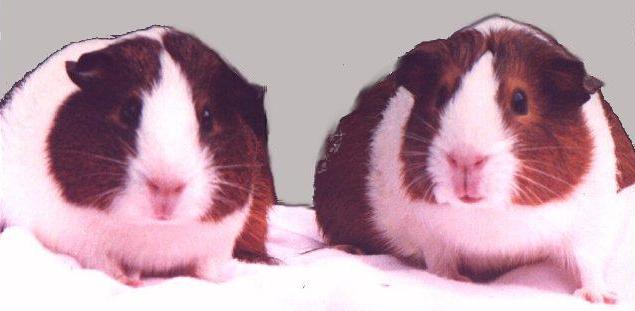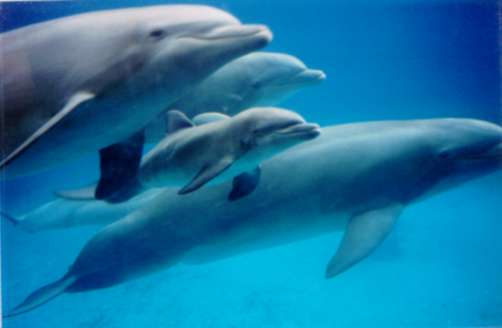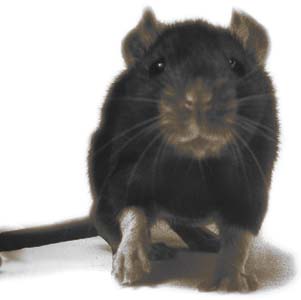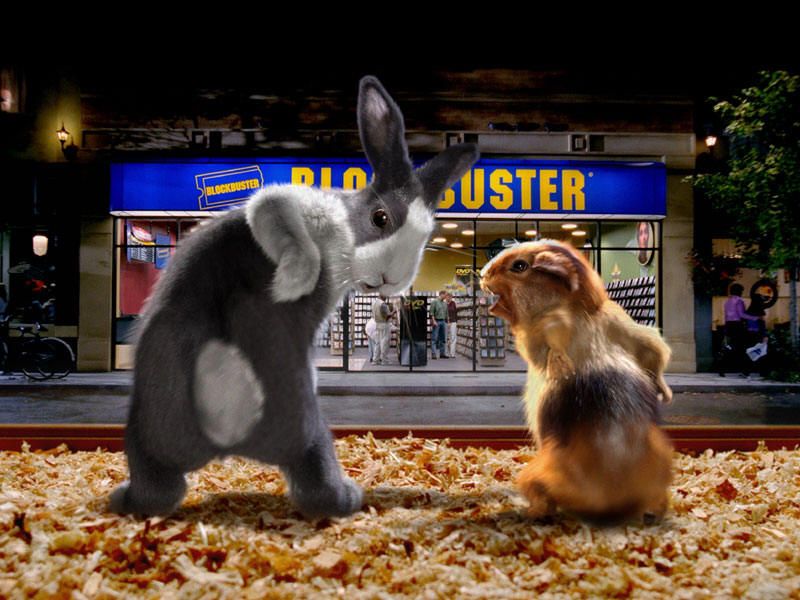
Walnut Creek
is a medium-sized suburban city located about 17 miles east of Oakland in Contra Costa County. Long ago, the first European settlers in this area planted walnut trees. Some of these trees grew close to a small creek; thus, over time the locals came to call the creek "Walnut Creek," but the town was known as "The Corners." With development, the town realized that the name "The Corners" made them sound square and thus adopted the name of the creek as its own, marking the beginning of its mission to "pave over paradise with a parking lot," which resulted in the creek's current route through a subterranean viaduct deep beneath the concrete floors of the malls above. Little known to most, the tunnels formed part of a secret highway formerly used by the U.S. Navy to transport highly dangerous nuclear weapons from the Lawrence Livermore Laboratories to the Naval weapons depot in Concord. Today, Walnut Creek is mostly known for its retail and restaurant offerings.
Walnut Creek is the business hub of Contra Costa County. Although many urban visitors to Walnut Creek may be surprised how few minorities appear on its streets, compared to other towns in the area (such as Danville or Alamo) Walnut Creek is practically a bastion of mutliculturalism and tolerance.
Once in downtown Walnut Creek, walking is basically your only choice. This shouldn't pose a problem because most of the downtown area is somewhat concentrated (10-15 minute walk at most). The biggest problem is parking.
What to See:· Lindsay Wildlife Museum, 1931 First Avenue.
http://www.wildlife-museum.org/ A wildlife rehabilitation and educational center that focuses on native California wildlife and natural history. The museum exhibits live, non-releasable native wildlife. Founded in 1955, the museum operates the oldest and one of the largest wildlife rehabilitation hospitals in the United States, treating more than 6,000 injured and orphaned wild animals each year. This is one of my son's favorite museums!
· Old Borges Ranch, 1035 Castle Rock Road.
http://home.pacbell.net/mkirwan/Borges_Ranch.htm The former ranch of early Walnut Creek pioneer Frank Borges is the home base for Walnut Creek's Shell Ridge Open Space activities. The ranch complex includes a blacksmith shop, numerous outbuildings, and farm equipment displays. It also features a barn and covered trellis available for group reservations. The Borges family home, built in 1901, houses historical displays of the early 1900’s. It is listed on the National Register of Historic Places. Great place to go if you forgot or always wondered what growing up on a farm was like. Once a month or so, my family and I hike along the many trails here.
· Dean Lesher Regional Center for the Arts, 1601 Civic Drive.
http://www.dlrca.org/CENTER.html The City's performing and visual arts center, opened in October 1990, houses the 800-seat Hofmann Theatre, the 300-seat Margaret Lesher Theatre, the 130-seat Knight Foundation Stage 3 theatre, the Bedford Gallery, offices and rehearsal space. Pretty impressive for a suburb, but not exactly The Met.
· Ruth Bancroft Garden, 1500 Bancroft Road.
http://www.ruthbancroftgarden.org/ Preserving an exceptional example of American garden design, The Ruth Bancroft Garden demonstrates the beauty and excitement possible in a water-conserving landscape. Internationally recognized as one of the finest private gardens in North America, The Garden was the first in the United States to be sponsored by The Garden Conservancy.
· Shadelands Ranch Historical Museum, 2660 Ygnacio Valley Road, (925) 935-7871. Built by early Walnut Creek pioneer Hiram Penniman, this 1903 redwood-framed house is a showcase for numerous historical artifacts, many of which belonged to the Pennimans. It also houses a rich archive of Contra Costa and Walnut Creek history in its collections of old newspapers, photographs and government records. The museum is on the National Register of Historic Places and belongs to the City, but is operated by the Walnut Creek Historical Society.
· Walnut Creek Model Railroad Society, 2751 Buena Vista Ave., Off Geary Road - In Larkey Park (925) 937-1888.
http://www.wcmrs.org/ A permanent, 1,800-square-foot model train layout. It includes an HO-scale train set with more than 4,300 feet of track on over 175,000 ties and over 340 turnouts.
· Sugarloaf Open Space, 2161 Youngs Valley Road, off Rudgear Road, (925) 944-5766. This is a 177-acre open space in the southern part of Walnut Creek. Visitors can enjoy amazing ridgeline views, scenic trails and a walnut orchard. There are also picnic areas and restrooms.
What to Do:· Mount Diablo State Park.
http://www.mdia.org/spinfo.htm This huge park dominates the landscape for most of central and eastern Contra Costa County. A small museum and observation post at the summit gives the visitor a background to the stunning views. Mt. Diablo is the geological anomaly of Northern California (the younger rocks are at the bottom and the older at the top). Enjoy the drive to the summit where, on a clear day, you can enjoy the world's supposed second-best panoramic view. In one quick turn you can see San Francisco, the Central Valley, and some claim the Sierra Nevada. Capped with snow in the winter and packed with countless small rivers and waterfalls in the spring, Mt. Diablo is a nature lover's paradise. Remember that Mt. Diablo is largely wild --- there are rattlesnakes, mountain lions, black widow spiders and many other fauna. Notwithstanding the dangers of the wild, many spots along the summit road offer scenic spots for a picnic. Be careful to avoid poison oak. A popular challenge for cyclists, the ride to the summit is about eight miles of twisty, narrow roads. There is a small fee for cars (cyclists riding on bikes are free). Rich girls from Danville and Blackhawk can often be seen riding their horses on the numerous fire trails. The park is closed during high-fire danger days in the late summer. This park offers many great hikings trails that we have enjoyed over the years.
· Iron Horse Trail.
http://www.ebparks.org/parks/trails/iron_horse Although this multi-use, whole-access trail runs between Concord and Dublin, the most interesting and scenic part of the trail is found in Walnut Creek. The Walnut Creek part of the trail goes directly into the heart of downtown Walnut Creek. Also, the trail abuts what's left of Walnut Creek's creek known as "Walnut Creek," which is now mostly buried beneath Broadway Plaza. Widely used by dog owners and recreational buffs, the Iron Horse Trail follows the Southern Pacific Railroad right-of-way established in 1891 and abandoned in 1977. This is a great place to ride your bike and not have to worry about cars!
Where to Shop:· Broadway Plaza.
http://www.broadwayplaza.com/ As one of the first post-WWII malls, Broadway plaza was designed on an open-air model. In subsequent years the trend in mall design gravitated toward the self-contained monstrosities that have become the signature of the suburban lifestyle. As an open-air mall, Broadway Plaza integrates well with the existing downtown. We enjoy shopping at Nordstrom and Banana Republic!
· Downtown Walnut Creek. More interesting than Broadway Plaza are the many stores comprising downtown Walnut Creek. After your next shopping spree to Baby Gap or Pottery Barn for Kids, make a detour down Locust and Main Streets. Downtown Walnut Creek complements its mall counterpart and preserves Walnut Creek's small town feel. The downtown stores and restaurants offer a variety and unique quality that would be impossible to find in Broadway Plaza, and you may find that you like them more. Occasionally, Walnut Creek will close down one of the downtown streets for an "art festival."
· Diablo Oriental Foods, 2590 N. Main St. (925) 933-2590. To read a review on
http://www.yelp.com/, please visit
http://www.yelp.com/biz/0SLNi80lWg1cf23HYEjhgA This small market is more than it appears (i.e. dilapidated shack); and although its name contains "oriental," implying an assortment of pan-Asian foodstuffs, in actuality, this is a specialty Japanese market that is jammed with Japanese foodstuffs that are nearly impossible to find this side of the Bay Bridge. From Natto and fresh tuna to sake and santoku knives, this market has more Japanese foodstuffs per square foot than any other place in the Bay Area. Whether you're a Japanese food fanatic or looking for a change from the usual, check it out and you might find something tasty.
Where to Eat:· Huynh Restaurant, 1512 Locust St., (925) 952-9898. Huynh is architecturally designed and a beautifully lit room featuring colorful earth tones of Vietnamese culture, a full bar, and table linens. The menu is fairly extensive and elaborate, including 20 types of soup along with main courses. They even offer vegetarian entrees! Every meal we’ve had here has been delicious, including our favorite dessert (fried banana with ice cream).
· Havana Restaurant, 1516 Bonanza St., (925) 939-4555.
http://www.havanarestaurant.com/ Havana is where Cuba meets Walnut Creek at this hip downtown restaurant and bar. The result is a sumptuous, hearty cuisine, in a fun inviting atmosphere. This restaurant serves Tapas, soup, salad, entrees like garlic studded pork, chicken adobo, cumin crusted tuna and paella, to name a few. They also offer halibut ceviche, grilled shrimp and sauteed scallops. We've enjoyed every meal we’ve had here.
· Va de Vi, 1511 Mt Diablo Blvd., (925) 979-0100.
http://vadevi.com/ Walnut Creek's take on small plates done in chef Kelly Degala's California Asian Fusion Style with several wines. Many wines are offered by the glass in addition to flights (tastes of three different wines). Weather permitting, try to eat outside by the oak tree; it's several hundred years old and perhaps one of the oldest remaining wild trees left in all of Walnut Creek. We like to dine here during special occasions because it's very $$$!
· Prima Ristorante, 1522 N. Main St., (925) 935-7780.
http://www.primaristorante.com/ An expensive California-Italian restaurant. Probably one of the better restaurants in Walnut Creek, but not on par with chi chi restaurants in San Francisco. Has a very nice wine selection for those so inclined. Waiters can be a little snooty, but are still friendly (to your face) and can help you pick the perfect wine to complement your food. Next door is Prima's wine shop, Prima Vini, where you can buy exclusive and hard-to-find vintages. This is a good place to take your date if you want to impress her!
· Bing Crosby's Restaurant and Piano Lounge, 342 Broadway Plaza (925) 939-2464.
http://www.bingcrosbysrestaurant.com/ Reasonably-priced Californian cuisine with Executive Chef Frank Palmer (of the Duck Club in Lafayette fame) that is constantly evolving and among the best in Walnut Creek. Stunning decor, Bing Crosby memorabilia-laden large open dining area, private dining area for parties (Wine Room) and a lounge featuring nightly entertainment make Bing's the newest hotspot in Walnut Creek. "Country club attire strictly enforced". Call ahead for reservations.
· Rocco's Ristorante & Pizzeria, 2909 Ygnacio Valley Rd., (925) 947-6105.
http://www.roccospizzeria.com/ Deep, deep, deep in the suburbs is one of the best pizza places around. Rocco's is your typical red-checker table cloth suburban pizzeria, serving pasta along with pizza dishes. The pasta isn't worth the trip, but the pizza is. Go during the special on Sundays and Mondays --- pitchers of beer are half off and large pizzas are around $12. Otherwise go to the website and use the coupon to save money.
· Strictly-to-go Pizza, 2670 N. Main St., (925) 945-6633.
http://www.strictlytogopizzeria.com/ One of the best pizza joints this side of the Mississippi. A classic Chicago style pizza that is piled high with premium ingredients makes Strictly-to-go a Walnut Creek institution. As the name states, the place is strictly to go, so don't plan on eating in.
· Tomatina, 1325 North Main St., (925) 930-9999.
http://www.tomatina.com/ One of the more popular restaurants in town offering high quality food and a casual atmosphere. One can order pizza there with a variety of interesting toppings, or the specialty, pianini which is flat bread with a "salad" on top of it. The polenta appetizer is also a must try with baked polenta, parmesean cheese, and tomato sauce.
· Cafe Lascala, 1655 N. Main St. (opp. Police Station), (925) 935-7779. Lascala is a casual cafe in Walnut Creek. The coffee is excellent, the ambiance laid back European, the food is simple and excellent. A little wifi enabled sanctuary.
· A Sweet Affair, Ygnacio Valley Plaza, (925)-944-1910. A Sweet Affair Bakery and Cafe is an outstanding, homely bakery with traditional pasteries, such as the cranberry danishes, cinnamon rolls, or blueberry scones. For lunch and dinner, they offer succulent sandwiches on thirteen different freshly-baked breads. They also offer a wide variety of cakes, cookies, muffins, brownies, and coffee/espresso.
Where to Sleep:· Renaissance ClubSport Walnut Creek Hotel, 2805 Jones Road, (925) 938-8700.
http://www.clubsports.com/ Near the Pleasant Hill BART station, this hotel seeks to claim the upscale hotel title of Walnut Creek. Perhaps it is, but it's quite a trek from downtown if you don't have a car. Conveniently located next to the Iron Horse Trail and possessing an extraordinary fitness center, this is the place to stay if you are a total workout freak and can't stand the thought of staying in Walnut Creek over several nights without a vigorous workout washed down with wheatgrass lattes.
· Embassy Suites, 1345 Treat Blvd, Phone: (925) 934-2500.
http://www.hilton.com/ Also located near the Pleasant Hill BART station at the northern end of Walnut Creek, conveniently located off the 680 freeway at Treat Boulevard. You know what to expect from an Embassy Suites since this one is like any of the countless others across the country. If you stay here, you will be a couple miles from downtown Walnut Creek. Pay-as-you go WiFi is available in the lobby/atrium, and works in many guest rooms. Rooms have wired for-pay connections also, but these can be flaky.
· Walnut Creek Marriott, 2355 North Main Street, (925) 934-2000.
http://www.walnutcreekmarriott.com/ A 338 room hotel that caters to business travelers, located close to the highway and BART. Fitness center, pool, restaurant, and pretty much anything else that every other Marriott in the country has. Rates average nearly $200 per night. My parents, my sister, and my nephew like to stay here when they visit us.
· Diablo Mountain Inn, 2079 Mt Diablo Boulevard, (800) 353-5059.
http://www.diablomountaininn.com/ 24 rooms and a swimming pool located in downtown Walnut Creek. This hotel is Walnut Creek's concept of budget accommodation at $70-$110 per night.
Where to Get Out:· Eugene O'Neill Tao House, by reservation only: (925) 838-0249.
http://www.eugeneoneill.org/ After you make the reservation a short bus will pick you up and shuttle you to the Tao House. Nestled in the hills of Danville and overlooking the vast expanse of 680 sits Eugene O'Neill's Tao House. If you never heard of Eugene O'Neill, don't fret. Only actors and drama geeks would have more than a mere familiarity with his works. For the rest of us, O'Neill is the only American playwright ever to receive the Nobel Prize. Perhaps O'Neill does not deserve this distinction because all he did was chronicle his very sad life in the form of a play. His misery, however, became our modern classics of drama. In an attempt to escape from his miserable, depressing life, O'Neill embraced feng shui (decades before it was trendy) and built the Tao House to help shut out some of his inner demons. Fortunately for us (and unfortunately for him) he was unsuccessful and wrote some of his greatest plays in this very house before sinking irretrievably into an abyss of self-loathing and darkness.
·
Lafayette - One of Walnut Creek's neighbors, Lafayette is a mostly residential town that offers interesting dining opportunities and is home to the Lafayette Reservoir, a great spot for hiking or jogging. If we could afford to buy a house in Lafayette, we would move here because of the excellent schools (even better than Walnut Creek's).
· Concord - Another Walnut Creek neighbor, Concord is one of the largest cities in the East Bay and has a variety of shopping and dining options. We travel up here to visit Costco or REI.
· Pleasant Hill. This neighboring city is primarily a typical family suburb, but it does offer options for food and shopping. If the schools were as good as Walnut Creek's, we would move here.
Source:
http://wikitravel.org/en/Walnut_Creek
 Wow, the Celebration FOR Turkey event at Farm Sanctuary was such a spiritual experience for me! I loved how we fed the turkeys before we fed ourselves. That is how it should always be. I always feed my animals before I feed myself. Countless animals have sacrificed their lives in order to feed us and we do not treat them with enough respect and compassion. Since we fed the turkeys at 1:00 PM, we didn't eat until 2:00 PM. Normally, I have lunch at 12:00 PM, but I wasn't even that hungry by the 2:00 arrived because I was so enthralled with the turkeys that I actually forgot about my hunger! When we visited the cow barn, most of the cows trotted over to us and lowered their heads so we could pet them (just like a rabbit)! They were the friendliest cows and I felt so touched by that experience. Instead of viewing us as enemies, they treated us as friends. They were completely innocent, open and trusting. We can learn so much from our four-footed friends!
Wow, the Celebration FOR Turkey event at Farm Sanctuary was such a spiritual experience for me! I loved how we fed the turkeys before we fed ourselves. That is how it should always be. I always feed my animals before I feed myself. Countless animals have sacrificed their lives in order to feed us and we do not treat them with enough respect and compassion. Since we fed the turkeys at 1:00 PM, we didn't eat until 2:00 PM. Normally, I have lunch at 12:00 PM, but I wasn't even that hungry by the 2:00 arrived because I was so enthralled with the turkeys that I actually forgot about my hunger! When we visited the cow barn, most of the cows trotted over to us and lowered their heads so we could pet them (just like a rabbit)! They were the friendliest cows and I felt so touched by that experience. Instead of viewing us as enemies, they treated us as friends. They were completely innocent, open and trusting. We can learn so much from our four-footed friends!













